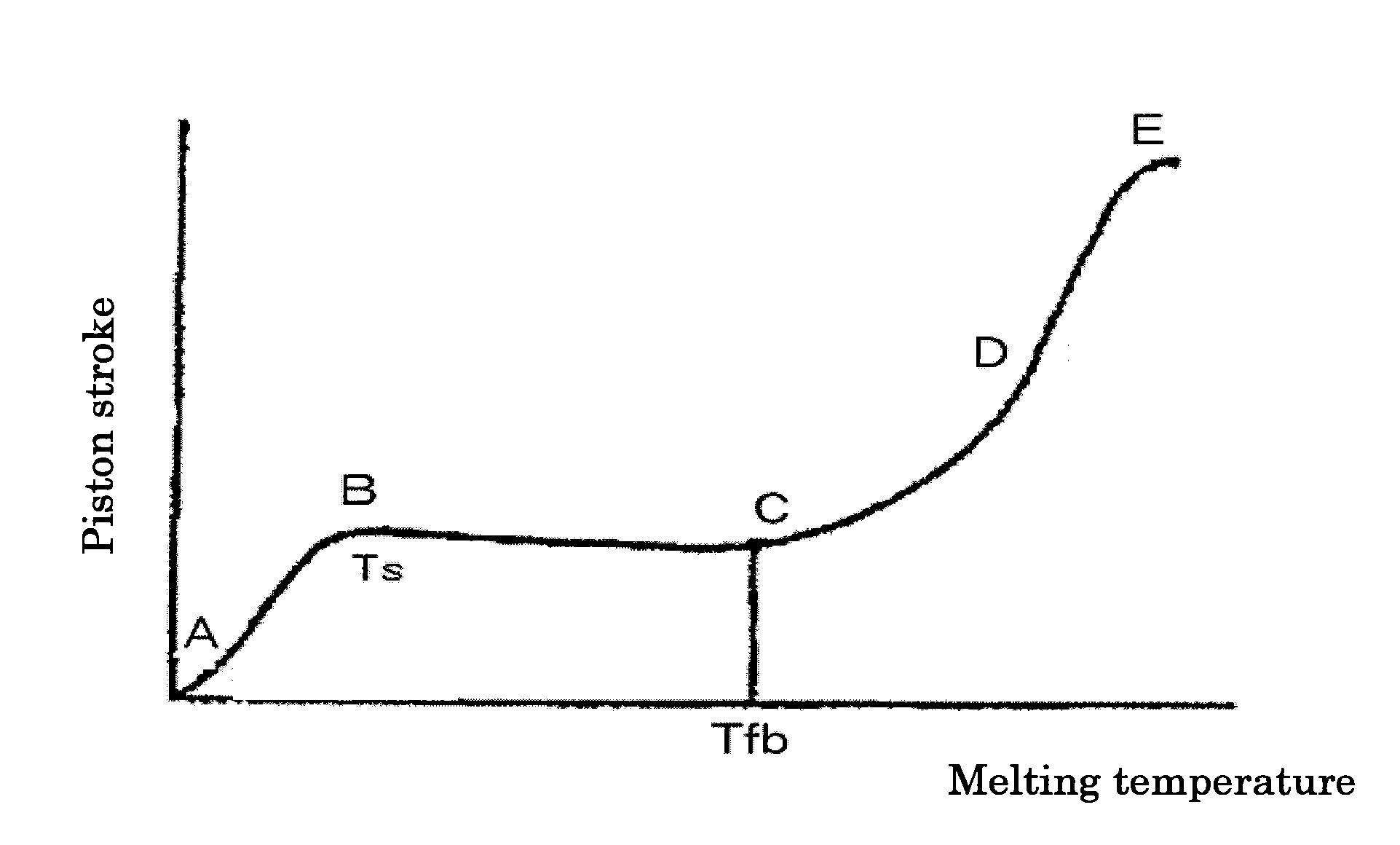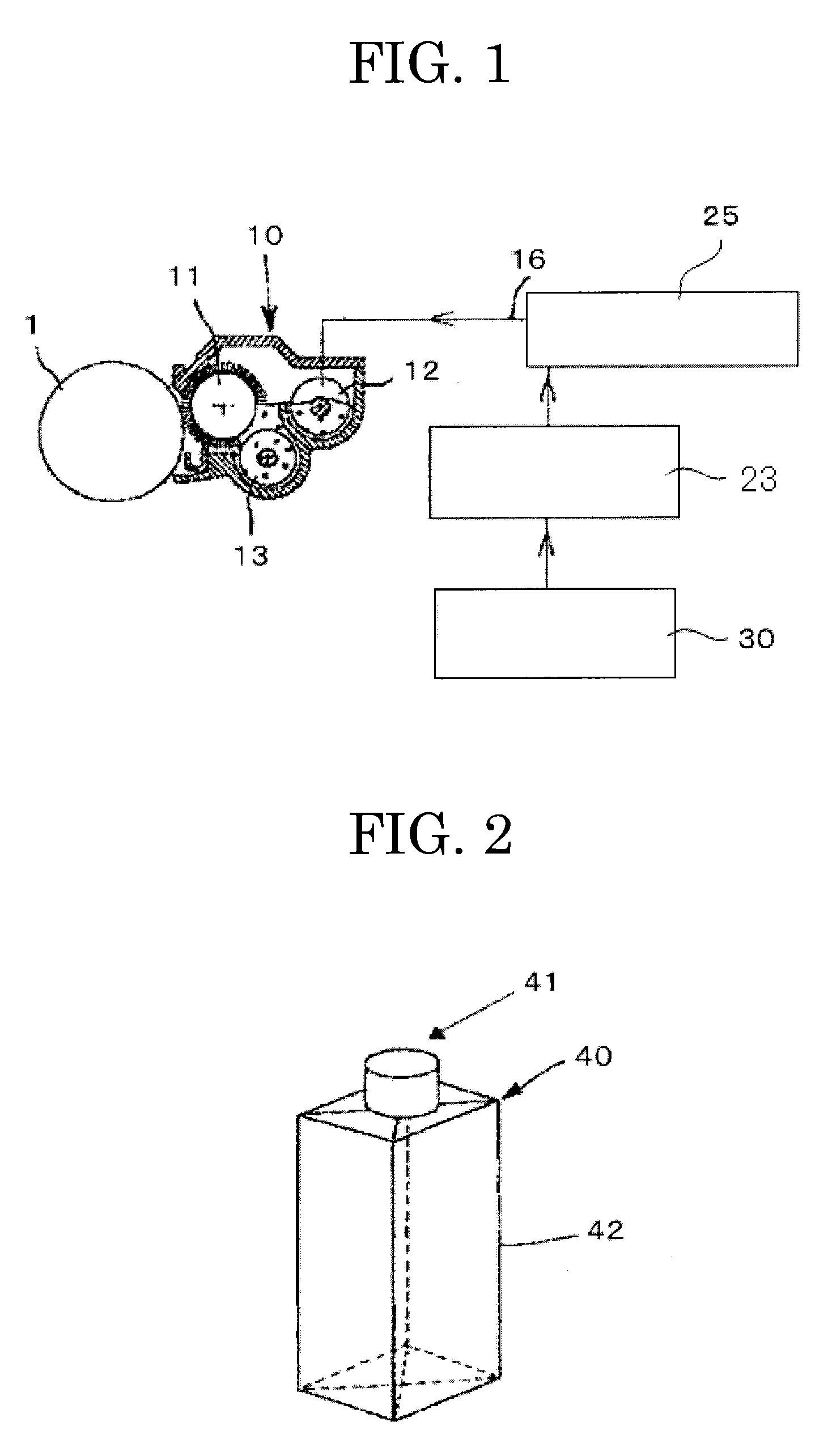Toner for electrostatic charge development
a technology of electrostatic charge and toner, which is applied in the field of toner, can solve the problems of reducing image density, reducing image quality, and reducing the treatment of residual toner collected after transferring, and achieves the effects of high image quality, desirable cleaning property, and high coloring ability
- Summary
- Abstract
- Description
- Claims
- Application Information
AI Technical Summary
Benefits of technology
Problems solved by technology
Method used
Image
Examples
example 1
—Production of Oil Phase—
[0406]A vessel equipped with a stirring bar and a thermometer was charged with 378 parts of [low molecular weight polyester 1], 110 parts of carnauba wax, 220 parts of [crystalline polyester 1], and 947 parts of ethyl acetate, and the resulting mixture was heated to 80° C. with stirring. The temperature was kept at 80° C. for 5 hours, followed by cooling to 30° C. over 1 hour, to thereby obtain [raw material dissolution liquid 1].
[0407]The [raw material dissolution liquid 1] (1,324 parts) was transferred to a vessel, and was dispersed by means of a bead mill (ULTRA VISCOMILL, product of AIMEX CO., Ltd.) under the conditions: a liquid feed rate of 1 kg / hr, disc circumferential velocity of 6 m / s, 0.5 mm-zirconia beads packed to 80% by volume, and 3 passes, to thereby prepare a raw material dispersion liquid (1).
[0408]Next, [master batch 1] was added to [raw material dispersion liquid 1], and the resulting mixture was dispersed once by means of the bead mill un...
example 2
[0420]Toner 2 was obtained in the same manner as in Example 1, provided that [low molecular weight polyester 1] was replaced with [low molecular weight polyester 2].
example 3
[0421]Toner 3 was obtained in the same manner as in Example 1, provided that [low molecular weight polyester 1] was replaced with [low molecular weight polyester 3].
PUM
| Property | Measurement | Unit |
|---|---|---|
| storage elastic modulus G' | aaaaa | aaaaa |
| storage elastic modulus G' | aaaaa | aaaaa |
| glass transition temperature | aaaaa | aaaaa |
Abstract
Description
Claims
Application Information
 Login to View More
Login to View More - R&D
- Intellectual Property
- Life Sciences
- Materials
- Tech Scout
- Unparalleled Data Quality
- Higher Quality Content
- 60% Fewer Hallucinations
Browse by: Latest US Patents, China's latest patents, Technical Efficacy Thesaurus, Application Domain, Technology Topic, Popular Technical Reports.
© 2025 PatSnap. All rights reserved.Legal|Privacy policy|Modern Slavery Act Transparency Statement|Sitemap|About US| Contact US: help@patsnap.com



